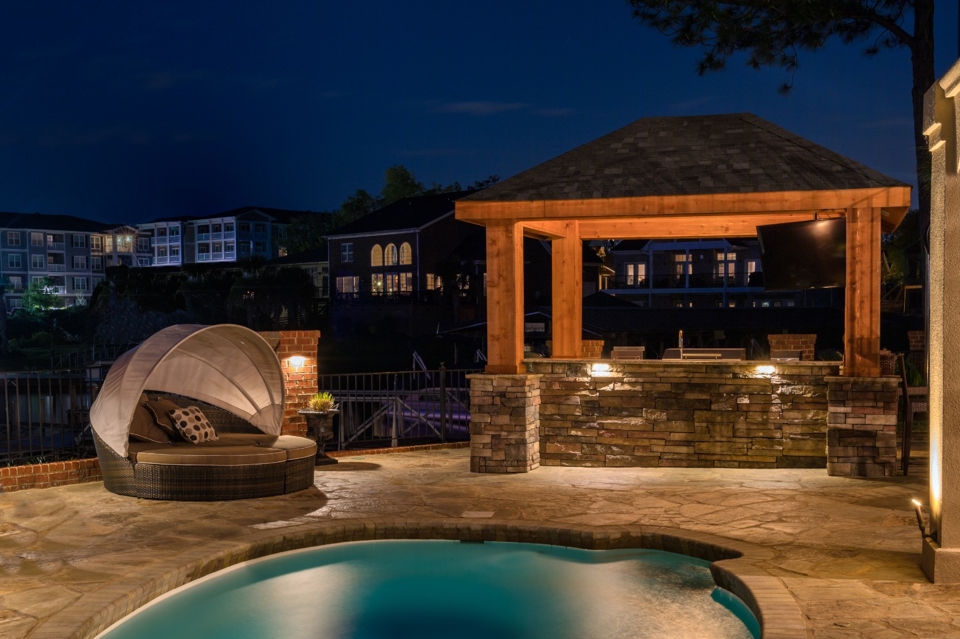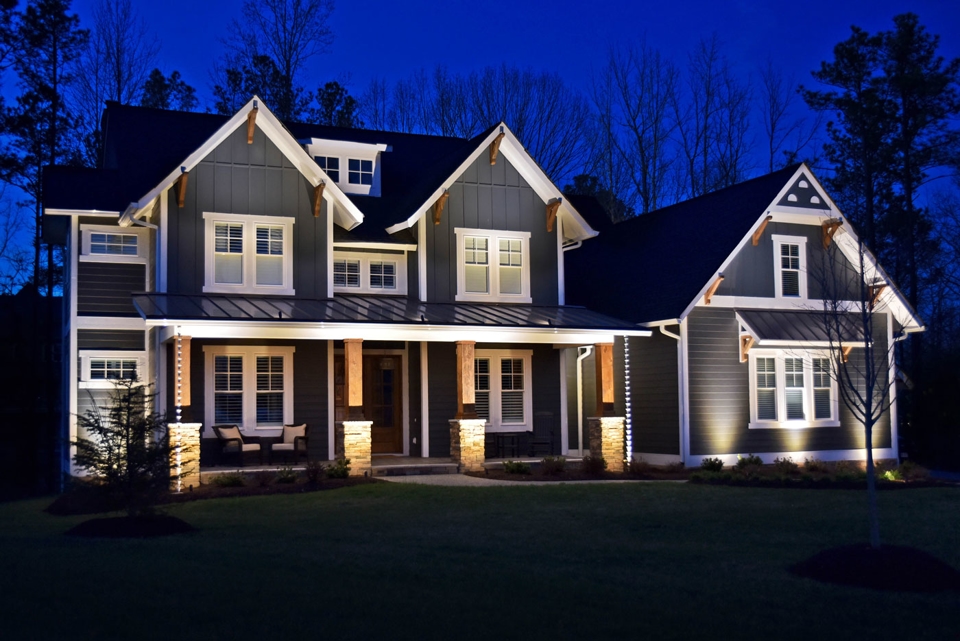When we see these landscape lighting packages in stores, it makes it look so easy. We look at the picture on the box and generally the picture illustrates some facet of your landscape that you can illuminate with the number of lights that are in that package. This generally is a single path – your driveway, the walkway to your door or maybe even your mailbox if the lighting package only has a couple lights.
When designing and installing landscape lighting for our homes, we need to think about our goals first and then our desired effect.
In addition to the architectural lighting you use to light up your home at night, some of your other exterior lighting goals might be security lighting for your doorways and yard entrances, safety lighting of your paths, focal point lighting for a spectacular tree or element in your yard.
Maybe you want to stroll through your garden in the evening or you’re even passionate to get out your gardening stool and finish some of the weeding you missed that day. Garden lighting is a great way to enjoy your handiwork even after the sun goes down. Check out some landscape lighting photos here.
• Pathway Lighting – Light projected onto a walkway from about knee-height or above to help illuminate the walking surface. Pathway lighting is designed to accent safety and security while having an aesthetic impact.
• Spot Lighting – Lighting to illuminate a specific feature. Some examples would be statues, flags and certain landscape and architectural features.
• Shadowing – A traditional effect in which a tree, fountain or architectural element is cast against a wall causing a shadow effect.
• Wall Wash Lighting – A technique used to create a soft illumination to accent the textures of the wall surfaces.
• Moon Lighting – The placement of a soft fixture high in a tree and shining down giving the illusion of moonlight.
• Area Lighting – Placing fixtures to illuminate a large area while not accentuating any particular object.
• Down Lighting – Lighting from above to illuminate an area or architectural element. Used mainly for safety and security but lends itself to special effects purposes.
• Up Lighting – Placing fixtures at ground level and pointing upward to dramatically illuminate architectural and landscaping elements.
• Silhouetting – The back lighting of an area to more effectively show an architectural detail or object.
• Step Lighting – Illuminating a step or group of steps to increase visibility and safety.
• Security Lighting – The strategic placement of lighting fixtures to offer a no-glare illumination for security purposes.
• Water/Pond Lighting – The placement of fixtures underwater to add illumination in general or to light underwater objects.






